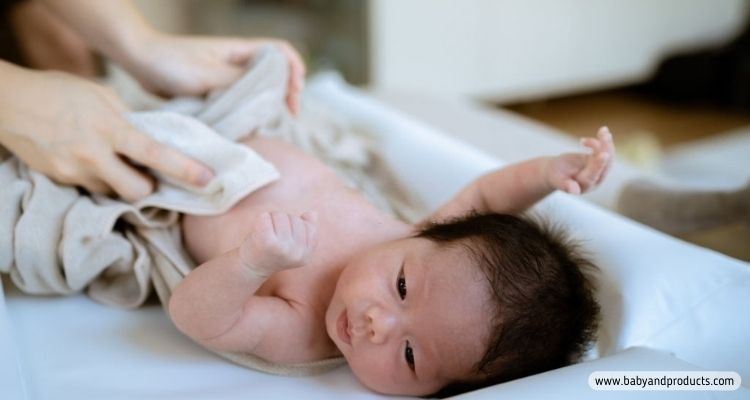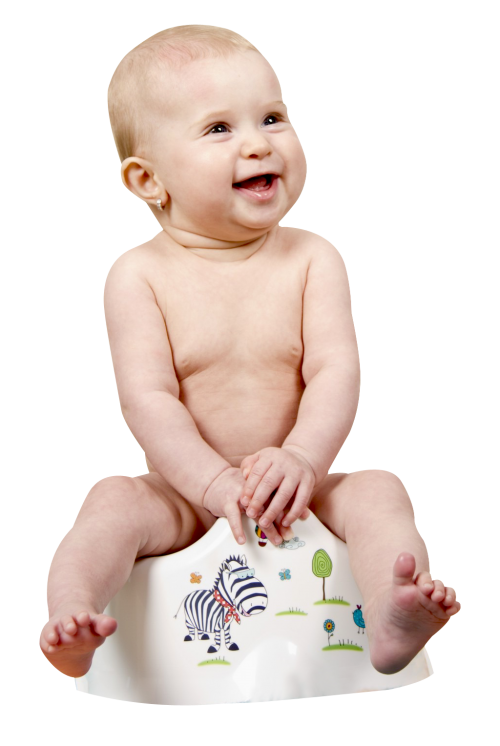You must make your toddler sleep in a right and safe sleeping position and environment. However, if you are new to parenthood, you must be confused about which sleeping position is safe for the baby. Well, don’t worry! We are going to answer your question and tell you even more critical information regarding best way for the newborn to sleep, so keep reading the article.
According to the American Academy of Pediatrics (AAP), sleeping on the back is the safest position for an infant to sleep. As this position has been observed to diminish the occurrence of sudden infant death syndrome (SIDs).

Why Sleeping on the Back Is Harmless for Babies?
According to research, some babies cannot breathe easily when napping on their tummies. That is because the baby’s lungs are compressed by the baby’s weight, allowing little air inside.
Additional findings explain that many infants who die from SIDS had undersized areas of their brain that resisted them from waking up whenever they felt suffocated and died eventually. Of course, it is impossible to recognize which baby is suffering from such a condition, so it’s better to take precautions and make your child sleep in the safest position.
The annual SIDS rate dropped more than 50 per cent after APP suggested that all newborn infants must sleep on their backs whenever they take naps or sleep at night. The report said that a baby sleeping on back is at the least risk of dying with SIDS.
Sleep Habits to Decrease the Danger of SIDS
By following the suggestion of AAP for infant sleeping positions, you can save your baby from SIDS. Here are some tips are given.

Select a stable sleep surface
Buy a mattress that is safety approved, enclosed by a sheet, and place your baby on it. Remember never to make your infant sleep on soft surfaces such as pillows.
Make sure your baby sleeps separately
Although you can let your infant sleep in your room, make sure not to rest them on the bed with adults or other children. Instead, your infant must nap in a bassinet, cradle, and be accompanied by a bedside co-sleeper.
Make sure the sleeping area is clear
Too much mess, such as pillows, quilts, toys, or other objects in the sleeping area, can make your baby suffocate. It would be great to clear the area before putting your baby on the bed.

Observe the temperature in your infant’s room
Never place your baby closer to heating vents, air conditioners, or open windows. In short, the temperature must be average, and it must not be very hot or too cold.
Alternative to blankets
Replace your baby’s blanket with a one-piece sleeper.
Go for a pacifier
Pacifiers have been recommended to decrease the chances of SIDS but don’t force your baby for it if he does not like it.

How to change infant sleeping positions
Although different babies have different sleeping positions, some may rest on their stomachs while others prefer side sleeping. When toddlers enter into slumber for longer, they find it hard to wake up themselves.
The easiest way to alter infant sleeping position is to start putting them to nap on their back. Sleeping on the back is the best baby sleeping position. However, the babies will require parents’ help to adapt to the new sleeping position. Parents or caregivers will need to nurse the child before putting them to bed, such as gently rubbing, singing poems to them before they fall asleep, or swinging them.
Parents must not utilize devices that hold an infant in position or resist them from rolling because this can enhance the danger of SIDs as the toddler might choke against the device. Restricting the movement of infants may resist them from moving out of a risky position. Instead, it would be great to push the baby to nap on their back.

What should you “DO” when making your newborn sleep?
- Put the infant on their back whenever they nap.
- Make sure that when you put the child to sleep, the surface is not too soft or not too firm, and it is also flat.
- Utilize a bassinet or portable crib
- Provide the baby with a clean and waterless pacifier. Still, in case they resist the pacifier, then don’t force the baby.
- Make sure that when your baby is sleeping, there are no hangings or strings around him.
- Cover the mattress where you place your child with a fitted sheet
- Use sleeping fabric, such as a sleep sack, or go for the one-piece outfit.
- Ensure the crib you are using for your little ones is safety-approved.
- Maintain a relaxing room temperature and avoid the excessive flow of air and overheating in a room where your infant is sleeping
- Start a routine for bedtime when your baby gets older than 4 to 6 months.
- You can also share a room with your toddler in case you feel they want extra attention or care.

What should you “NOT DO” when making your child sleep?
- Never go for bumper pads, comforters, positioners, stuffed animals, and bean bags on the cradle.
- Never let the baby on a sofa or waterbed.
- Make sure you don’t cover the head of the toddler when he is sleeping
- Make sure there is no exposure the toddler to smoke
- Don’t share the bed with the infant as it may increase risks of suffocation
- Restrain from utilizing blankets or loose tops
- Never place the baby too near to heating openings or air conditioners
Is bed-sharing safe for your child?
Some parents love to share beds with their newborns. However, this act has always been seen as controversial. It is a common practice in some cultures, but healthcare is not favouring this practice in the USA. The AAP stresses that bed-sharing earlier when infants get older than four months presents the most significant risk.
Although support group La Leche league suggests people who desire to share a bed with their toddlers offer the following tips.
- Never smoke or permit the infant to sleep close to the person who smokes
- Don’t go for bed-sharing with the toddler when intoxicated
- Bed share only when the baby breastfeeds
- Never share the bed if your infant has been born prematurely
- Make sure you place the child to sleep on their back
- Offers your child light clothing when he sleeps instead of heavy layers
The Academy of Breastfeed Medicine buoys up caregivers to converse about the risk of bed-sharing to people new to parenthood. However, they have been arguing that bed-sharing might enhance sleep for the baby’s mother and facilitate breastfeeding.
Summing up…
When you are new to parenthood, you feel anxious for the little being who just entered your home. Babies are very delicate and require extra care. Parents must be cautious when their toddlers sleep when they’re not around them.
Parents Also Ask
How much should a newborn sleep?
Usually, infants must sleep for 15 to 17 hours a day, according to National Sleep Foundation. However, some babies sleep for 18 to 19 hours per day. The toddlers get up from sleep after every few hours to eat. Breastfed babies require mother’s milk, often approximately 2 to 3 hours. On the other hand, bottle-fed babies are likely to provide less approximately after 3 to 4 hours.
How to help a baby with reflux sleep at night?
Make a bedtime routine and follow it consistently to cope with this issue. Swinging your toddler in a vertical direction unless they become tired and almost sleepy can help calm them and diminish acid reflux or GERD symptoms. Read more about GERD here.
Can a baby sleep on my chest?
If the parents are awake and their newborn sleeps on their chest, it has not shown any risk of danger. However, close contact between parents and their little ones has always been beneficial. Although sleeping on the chest and if the parents of the child are not awake can put the infant at a greater risk of SIDs, which is also called cot death.
What should a newborn sleep in?
It would be best to put your infant in a bassinet or crib. However, it is totally up to you whether you choose to put it in a crib or bassinet after its birth. Still, along with it, you can purchase the best newborn sleeper to provide additional comfort to your baby. Infants can also nap in a portable crib or play yard. It does not matter which product you go for but make sure whatever you select must meet the most recent CPSC guidelines.
Is it ok for the baby to sleep on the side?
Side sleeping is fine for infants between the age of 4 to 6 months, and they roll by themselves when you place them on their rear. Remember to put your toddler to nap on their back after they become older than one year. Talk to your infant’s pediatrician if you observe a liking for side sleeping in the initial three months.
Can my baby sleep in my arms at night?
You have to find out if this solution works best for your toddler. One caution that most parents hear frequently is that they should not make babies habitual of sleeping in their arms. Eventually, they have to admit their little ones in kindergarten, which can become problematic if the babies are habitual of sleeping in their parents’ arms. Still, it’s absolutely fine for newborn babies.
When should a baby start sleeping in its room?
All infants should sleep in their parent’s room initially, says the American Academy of Pediatrics. However, they should be placed in a bassinet or crib near the parents’ bed. Parents can transition their baby to own room when they get older than 6 to 12 months.





